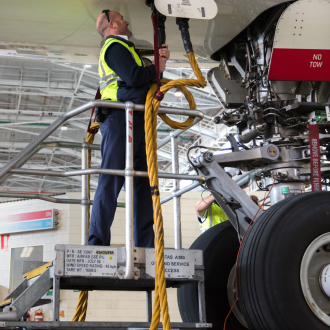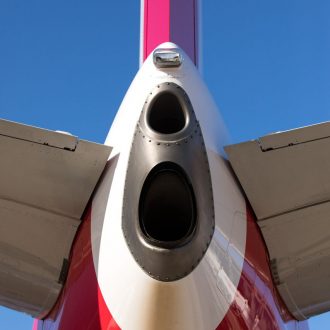
Need some juice: This cable can run the systems on an A380 or charge your iPhone in about 1.5 seconds
When aircraft are in flight, all the electricity they need to power various systems comes from the engines.
But what happens when they are on the ground in-between flights, and the engines aren’t running?
Aircraft still need a significant amount of energy to operate things like air conditioning, cabin lights and hundreds of entertainment screens before passengers board.
And pilots need avionic systems – including radios, navigation aids and display screens in the cockpit – to be fired up for their pre-flight checks at the gate.
For obvious safety reasons, engines can’t run while the aircraft is sitting at the gate and ground crews are milling around.

Here’s looking at (AP)U: This is the exhaust for the auxiliary power unit, you can tell if the APU is running by the heat haze coming from it.
So to keep everything running, aircraft are fitted with a small turbine located at the rear of the plane called the APU or Auxiliary Power Unit. It runs on the same fuel that powers the engines.
But we try to save fuel as much fuel as possible, and that’s why we try to plug our planes into ground power wherever possible.
Next time you’re at the boarding gate, see if you can spot some large yellow cables running from the ground to the belly of the aircraft, near the nose.
They connect the aircraft to the ground power so we don’t have to run the APU while it’s not flying – and save a lot of fuel in the process.
If you’ve ever experienced the lights in the cabin flickering when you arrive at the gate, chances are it was the aircraft switching from APU or engine power to ground power.
Using ground power is not just about saving fuel but also reducing emissions.
In fact, our ground power in Sydney is produced at our very own Tri-generation plant which is a third more efficient than the main electricity grid. The tri-generation energy supplies electricity as well as heating and cooling to our Qantas HQ – helping us reduce our carbon footprint.
Read more Roo Tales here .